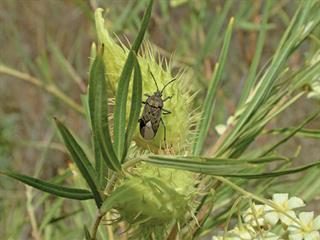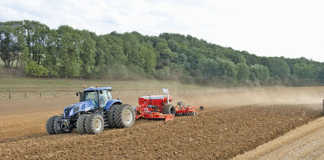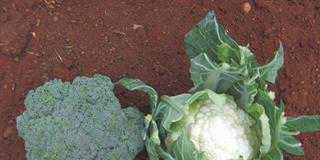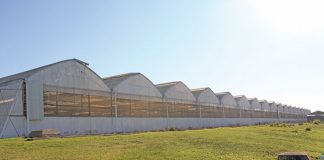
Scientific name: Spilostethus pandurus
Family: Lygaeidae
Distribution: Widespread over much of Africa; has also spread to Asia and Europe.
Description
Despite its common name, the milkweed bug feeds on many types of crop, including apricot, citrus, cotton, maize, mangoes, millet, sorghum, sunflower and sweet potato. Adults feed either alone or in small groups. Generally, the milkweed bug is regarded as a minor pest. Occasionally, however, large numbers occur on plants. The reason for this is unknown. Unlike many other pests which feed on leaves or stems, milkweed bugs feed on the seeds. The bug injects a digestive saliva into the seed that dissolves the contents, which it then sucks up. Seeds that have been attacked shrivel up and die, and seed pods may deform.
Reproduction
Females lay their eggs on the underside of fallen leaves. The eggs are oval and white at first, then turn dark blue towards hatching time. A female lays 50 to 60 eggs in batch, and lays about 10 batches spread over several leaves or even other plants.
Control
In the author’s experience, chemical pesticides have little effect on milkweed bugs, and are seldom needed, anyway. In parts of Asia, farmers spray Neem oil on them, which seems effective. The best control measure is to simply flick the bugs into a bucket and kill them. Remember to wear gloves, as they release an unpleasant smelling substance that helps to protect them from natural predators such as birds.
Please note: this series is intended mainly as a guide to identifying pests. The control methods discussed are merely suggestions. For help with area- or crop-specific measures, consult your agricultural extension officer. Paul Donovan advises farmers on biological control agents.













